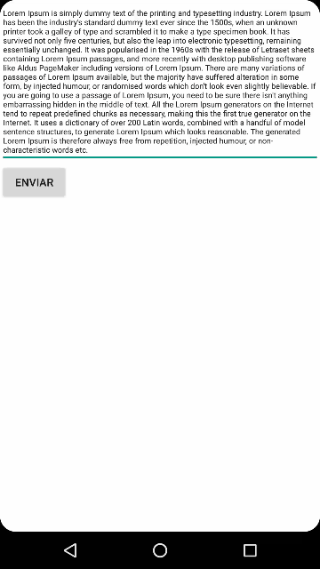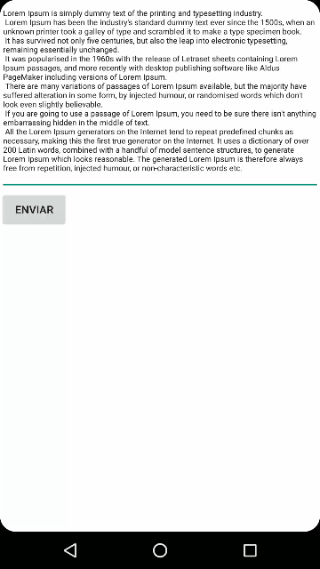Bueno como para que estemos en sintonia mi idea es crear un logger
ya logre hacer que tenga scroll vertical pero
como hago que no se ajuste el texto en el TextView les comparto el código :
<?xml version="1.0" encoding="utf-8"?>
<android.support.constraint.ConstraintLayout xmlns:android="http://schemas.android.com/apk/res/android"
xmlns:app="http://schemas.android.com/apk/res-auto"
android:layout_width="match_parent"
android:layout_height="match_parent">
<EditText
android:id="@+id/edit"
android:layout_width="match_parent"
android:layout_height="wrap_content"
android:textSize="20sp"
android:hint="texto" />
<Button
android:id="@+id/send"
android:layout_width="wrap_content"
android:layout_height="wrap_content"
android:text="enviar"
app:layout_constraintTop_toBottomOf="@id/edit"/>
<TextView
android:id="@+id/test1"
android:layout_width="wrap_content"
android:layout_height="wrap_content"
android:lines="4"
android:scrollbars="vertical|horizontal"
app:layout_constraintBottom_toBottomOf="parent"
app:layout_constraintTop_toTopOf="parent" />
</android.support.constraint.ConstraintLayout>
JAVA:
public class MainActivity extends AppCompatActivity {
@Override
protected void onCreate(Bundle savedInstanceState) {
super.onCreate(savedInstanceState);
setContentView(R.layout.activity);
final TextView textView = (TextView) findViewById(R.id.test1);
Button but=(Button) findViewById(R.id.send);
final EditText edit=(EditText) findViewById(R.id.edit);
textView.setMovementMethod(new ScrollingMovementMethod());
but.setOnClickListener(new View.OnClickListener() {
@Override
public void onClick(View v) {
String text=edit.getText().toString();
textView.append("\n"+text);
}
});
}
}
RESULTADO:
ya así funciona el scroll vertical pero no el horizontal
RESPUESTA MAS ACERTADA
<HorizontalScrollView
android:layout_width="match_parent"
android:layout_height="wrap_content"
app:layout_constraintBottom_toBottomOf="parent"
app:layout_constraintTop_toTopOf="parent">
<LinearLayout
android:layout_width="wrap_content"
android:layout_height="wrap_content">
<TextView
android:id="@+id/test1"
android:layout_width="wrap_content"
android:layout_height="wrap_content"
android:lines="4"
android:scrollbars="vertical" />
</LinearLayout>
</HorizontalScrollView>
pero: al ser wrap_content el tamaño del textview no es el mejor para facilitar el movimiento vertical


